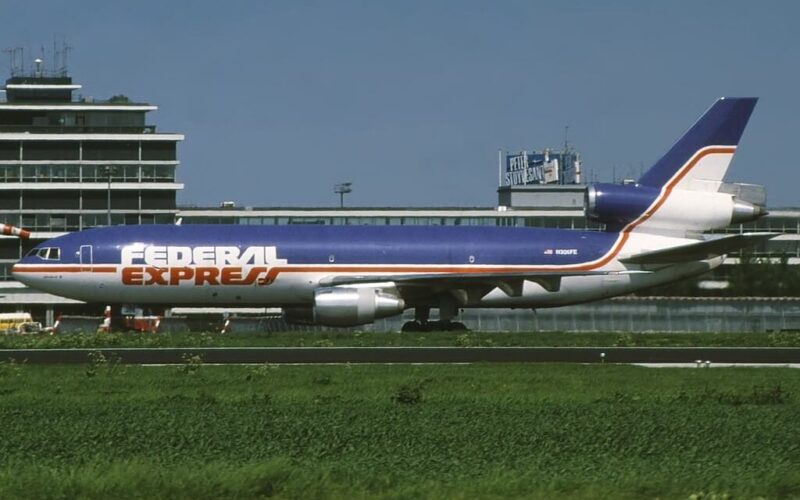On this day 28 years ago, Federal Express Flight 705 departed Memphis, Tennessee for San Jose, California. The aircraft, a McDonnell Douglas DC-10-30 freighter, was operated by captain David Sanders, first officer James Tucker Jr and flight engineer Andrew Peterson. Also on the aircraft was passenger Auburn Calloway, a FedEx flight engineer on a ferry flight.
Unbeknown to the crew, Calloway was carrying several hammers and a speargun in his luggage. Facing the possibility of dismissal over claims of falsifying flying hours, Calloway was planning to hijack the plane and kill the crew before committing suicide and disguising the crash as an accident.
While preparing for departure, flight engineer Peterson noticed that the Cockpit Voice Recorder (CVR) circuit breaker was pulled, and so he reset to reactivate it. The departure was routine until 26 minutes after take-off, when, while passing 19,000ft, Calloway left the flight deck to retrieve his weapons.
When Calloway returned, he attacked Peterson, Tucker and Sanders, striking the three crew with the hammers. As Calloway went to retrieve the speargun, Peterson and Sanders, both severely injured, got out of their seats and struggled with Calloway to disarm him.
Tucker, who was flying, began to perform extreme maneuvers by pitching up, rolling and diving the plane in an attempt to disorientate Calloway. During these maneuvers, everyone except Tucker, who was seated, was thrown into the galley and the aircraft was almost inverted at times, through 140º with the three men pinned to the ceiling.
While flying the plane, Tucker could sense that the aircraft was at its structural limits and began to level off the aircraft, before informing Memphis Center of the hijacking, requesting armed intervention after landing.
The flight crew eventually disarmed Calloway. Sanders took over control of the aircraft, relieving Tucker, who was paralyzed through the right side of his body, to assist Peterson in restraining Calloway.
The DC-10 was fully laden with fuel and cargo, approaching too fast and too high, with no time or capability for Sanders to leave his seat and begin the process of a fuel jettison on the flight engineer’s panel. Nevertheless, the aircraft landed safely at Memphis approximately 16,000kg over the maximum designed landing weight.
Police gained access to the aircraft up the emergency slide via a ladder and found the galley and cockpit covered in blood. Calloway was arrested and the three crew were taken to hospital.
Aftermath
All three crew were critically injured, suffering life-changing injuries.
First officer Tucker had his jaw dislocated as well as suffering several fractures to his skull. In addition, his right arm had been stabbed and Calloway had attempted to gouge out one of his eyes. Captain Sanders had several deep gashes in his head, and his right ear had to be sewn back on. Flight engineer Peterson’s skull was fractured and an artery had been severed.
Calloway was sentenced to two consecutive life sentences without parole on August 11, 1995 for attempted murder and air piracy. His motives were thought to be a $2.5 million life insurance policy payable to his family on death.
Following the incident, Sanders, Tucker and Peterson were awarded the gold medal for heroism by the Air Line Pilots Association. Due to the severity of their injuries, none of the pilots have since passed the aviation medical required to fly commercially.
Despite suffering damage in the region of $800,000, the DC-10-30 registration N306FE involved in the incident remains in service to this day.

